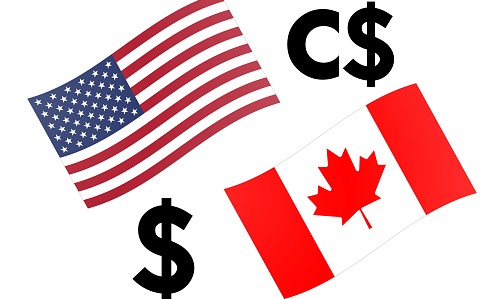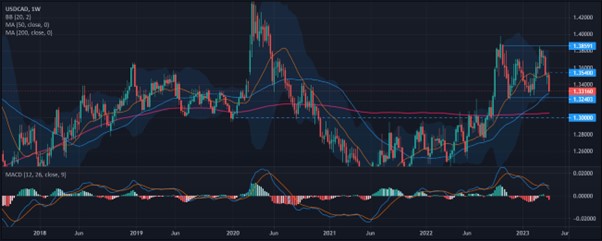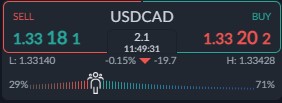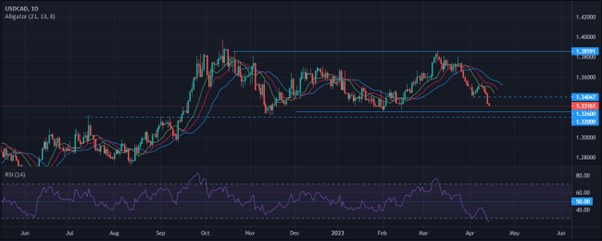The USDCAD was down -0.14% early Friday morning extending its 5-day string of losses. The US CPI print released on Wednesday softened, suggesting the Fed could push back on further tightening into May. The CPI data YoY fell to 5.0% vs 5.2% surveyed presenting a more rapid fall than expected.
Furthermore, the USD index fell to 100.78 level, a one-year low as US PPI and Initial Jobless Claims closed in on the possibility of further tightening by the Fed. The US PPI (MoM) data for March fell to -0.5% against the 0.1% forecasted, while Initial Jobless Claims rose to 239K vs 232K anticipated.
However, the USDCAD could experience a short-term recovery as the rally in oil markets loses steam. The retracement in oil markets and a dovish BoC could help bulls hold above the 1.3300 level. The USWTI was steady at +0.07% after bulls retracted from the 83.00 level, a yearly high. The BoC maintained their rates at 4.50% as anticipated after a consecutive hike in a bid to slow down inflation.
On the close of the week, traders shift their focus to the US Retail Sales data along with Michigan consumer sentiment for April. Fed Waller will be speaking later in the New York session.
Weekly Chart Analysis
The USDCAD suffered losses to the close of the week, as bears remain in control below 1.3540, a level coinciding with the Bollinger Band Baseline. Near-term targets for short positions on the pair are at 1.3240 low if the 1.33000 psychological level fails to hold as a near-term barrier. The MACD indicator volume bars have broken below the 0.00 benchmark suggesting the pair could be entering a bearish cycle. A break below the 1.3240 could trigger further selling towards the 1.3000 level coinciding with the 200-day moving average.
However, a hold above the 1.33000, a level coinciding with a 50-day moving average could cause USDCAD to experience short-term buy opportunities. The bulls could target the 1.3540 level in the near-term and a break above that level could reinforce buying pressure towards the 1.3850 level, 21 October 2022 high.
The ActivTrader Sentiment tool suggests 71% of retail traders have turned bullish on the USDCAD. The sentiment could be greatly influenced by the supply and demand uncertainty for oil. The Canadian dollar could give back its weekly gains as BoC kept rates unchanged at 4.50%.
However, persistent dollar weakness continues to see USDCAD trading lower closer to its yearly lows. The weaker Jobless Claims and Industrial data released early Thursday afternoon underpinned the bearish outlook on the pair. To the close of the week, Traders shift focus to US Retail Sales data and Michigan Consumer Sentiment data for April and a worse than expected data could see further selloff on the pair.
Daily Chart Analysis







